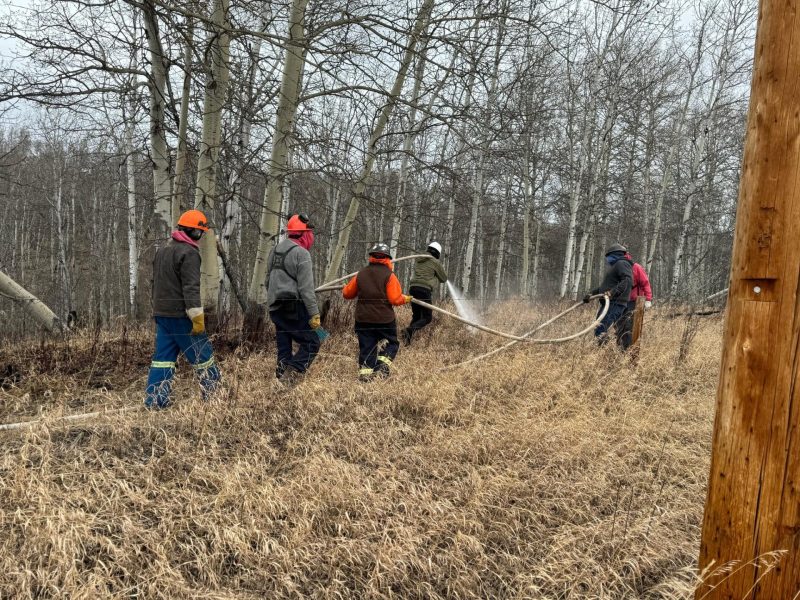The prolonged dry conditions and early start to the wildfire season in northern BC have Peace Region producers and organizations taking proactive steps to protect land and infrastructure.
Over the last few months, the Peace Region Forage Association has hosted six wildland fire training sessions. The events attracted 144 participants who learned about wildfire behaviour and how to defend their rural properties from wildfires.
“We have a lot of farmers and ranchers who want to protect their properties and rightfully so; it’s their livelihoods. BC Wildfire Service can’t be everywhere at once,” says PFRA extension coordinator Nadia Mori.
Also part of the preparation is the acquisition of wildfire response equipment.
PFRA received a total of $644,728 through Investment Agriculture Foundation of BC’s Food Security Emergency Planning and Preparedness Fund for training and equipment.
The majority, $432,000, supported the purchase of two wildfire structural protection unit trailers.
“The trailers will be used by people who have had the training … for the safety of everybody,” Mori says. “The trailers are over $200,000 each. They are equipped with everything you might need to properly and professionally fight a fire.”
The trailers are not yet completed, but once available they will be stationed in the Buick and Pouce Coupe areas.
Mori hopes the first trailer will be ready and stationed by the end of May.
The association is also looking to continue work it started earlier this spring on prescribed fire to rejuvenate degraded forage pastures, but conditions are not making this work easy.
“The weather conditions were really challenging, and the province was put under fire bans, so we had to have special permission to even do those burns,” Mori says.
PFRA only received permission because they are collaborating with the experienced team led by Sonja Leverkus with Shifting Mosaics and Northern Fire WoRx.
“We had helicopter and water tank support and the experienced team,” Mori says. “It was not cheap to do those burns, but the important thing is that we want to demonstrate safe prescribed burning and that was needed to do that in those conditions.”
Overall, producers are holding their breath with the dry conditions and extremely patchy precipitation, Mori says.
“For forage producers, it’s extremely dry. We’re definitely in a deficit on moisture,” she says. “For the pastures, it’s going to be a tough one for those thinking about haying. … I would say the plants are already making up their minds on how much they’re going to grow right now. If there’s no moisture, it’s probably going to be very tight on feed.”


 Farm compensation benchmarks set
Farm compensation benchmarks set